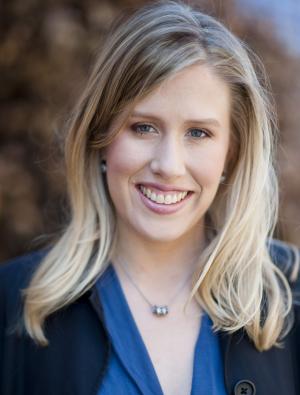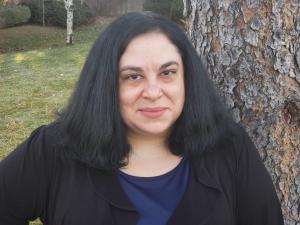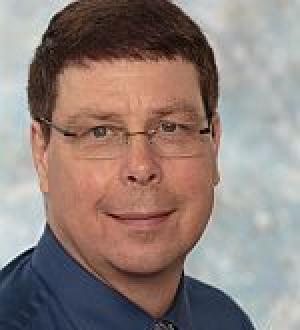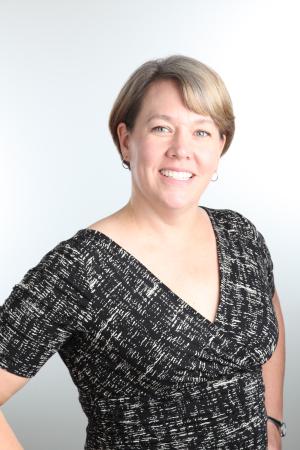Resources

At Nashotah House Theological Seminary, a crucial element of our participation in the seminary’s Anglo-Catholic tradition is the student body and faculty’s regular presence at morning prayer, mass, and sung even-song. In the seminary’s beautiful chapel, surrounded by stained glass and hand-carved wooden statues, we sit in the antique wooden choir stalls lining the chancel and join together in worship. As a junior faculty member, I quickly learned a Nashotah House tradition: your choir stall is not yours to determine. The seats are assigned based on seniority, and priority is zealously guarded. Where you sit matters. This tradition of established place carries its own ethical challenges and requires its own ethical interrogation. What assumptions regarding hierarchy and privilege in our tradition and amongst our student body and faculty does it underwrite? To provide one example, our tradition has come into conflict with our commitment to ensuring that students with mobility challenges have equal opportunity to participate in worship, requiring questioning and ultimately changes to our tradition. Teaching social justice in a tradition requires inviting students to engage in a similar (although broader) excavation of that tradition. Of course, a crucial part of this teaching involves learning alongside my students how to step outside the tradition to critically confront the moral and ethical failure of Anglicans, such as the use of Anglican theology at times to support slavery and colonialism. This critical engagement requires accepting that our seats often are gained at the expense of others, and may require change and even surrender on our parts. These moral failures have been well documented and extensively explored, so excavating the resources for critique has been fairly straightforward. An unexpected joy of this type of excavation, however, has been how many good and constructive resources for social justice remain to be uncovered in the tradition. The Oxford Movement which launched Anglo-Catholicism accompanied liturgical revision with a serious theologically-grounded commitment to working for social justice, spanning generations of the movement and manifested in many different forms. Excavating these resources provides the opportunity to invite students into a different form of engagement with the tradition. Students have become imaginatively engaged in questioning their own social assumptions and career aspirations by reading about the so-called “slum priests,” for example, whose commitment to “ritualism” was equaled by their commitment to working to challenge the economic, social, and political structures which created and justified the appalling living conditions suffered by the poor of British manufacturing cities. Students have learned how to connect social critique and advocacy for justice to Anglican theology through reading the works of the great reforming Archbishop of Canterbury, William Temple. Of course, exposure to works of Anglicans such as Pauli Murray and Bishop Desmond Tutu have expanded their conceptions of Anglicanism’s work for social justice beyond Anglo-Catholicism and the British Isles. One of the most fruitful resources I have found for retrieval within the tradition are the editions of the British Critic—the journal edited by John Henry Newman in the early days of the Tractarian controversies. Along with discussion of history, doctrine, and liturgy, the pages of this Christian socialist leaning journal are filled with essays of social critique and challenge. One of the essays, written in 1842, which has engaged and challenged my students the most is a long theological critique of the practice then common in British parishes of renting pews to the social elite. The author describes how the poor, walking in and seeing the great boxed pews lined along the front of the parish church, are confronted with an image of the priority of wealth and privilege which runs exactly opposite to Jesus’s message of the priority of the poor in the gospel. Rather than encountering “the image and pattern of heaven” in the church, they see “the world, the flesh, and the devil apparently in full possession.” As part of the Anglo-Catholic liturgical revival, the author calls for the removal of these pews and the restoration of the parish to the poor and needy whom Christ intends to possess it. Through this image, students begin to encounter the connection between the Anglo-Catholic tradition of beautiful worship and architecture with the beauty of justice and service. Over my time at Nashotah, I have realized that our tradition of choir stall seating incorporates not only seniority, but also service. At every service, one of the sacristans (the student-leaders with the most authority in worship) always forgoes sitting in choir to sit by the back door of the chapel—he or she is placed there by the tradition to greet, care for, and assist any guests who might join in the service. My hope for my students is that they leave our seminary having learned that Anglo Catholicism not only provides choir stalls, but also provides models and methods to emulate, just like the sacristans sitting at the back of the church ready to serve and care for others. Where you sit matters.

In 1887, British politician Lord Acton wrote the well-known phrase, “Power tends to corrupt, and absolute power corrupts absolutely.” Not as well-known is the context in which Lord Acton penned these words. They were written to the Archbishop of the Church of England, Mandell Creighton, who decried what he saw as overly harsh criticism of men in authority, namely, corrupt and abusive popes. In the same letter, Acton remarked, “I cannot accept your canon that we are to judge Pope and King unlike other men, with a favourable presumption that they did no wrong. If there is any presumption it is the other way against holders of power...there is no worse heresy than that the office sanctifies the holder of it.”[1] Christianity and power have long been intertwined in problematic ways, but does this mean that religious leaders and people of faith working for justice and peace should avoid power altogether? Is power inherently bad? In my Community Organizing course for theology students, our discussions interrogate these questions and contextualize them to current realities. Drawn from one of the class texts, our working definition of community organizing is “to mobilize disenfranchised people to advocate on their own behalf in relationship to some power structure in order to achieve needed changes.”[2] This important work necessitates the amassing of power, not for consolidation with the few but for distribution among the many, so that power relations are transformed and power itself becomes a shared entity. In other words, structures that have consolidated power such that individuals residing within them are “sanctified” by the nature of their office must be held to account by the collective power of those impacted by the sanctified’s actions. Ultimately, power is not inherently good or bad; but it has the potential to be either or both depending on who has it and how it is shared (or hoarded, as the case may be). Organizers—and ministry leaders—need to learn not only how to share power with others, but also how to help others recognize that they have power in the first place. In the COVID-19 era in which instruction has moved online, engaging in activities that help students practice power sharing requires creativity, patience, and a willingness to yield some of my own power as the instructor. The course is delivered asynchronously for the most part, but there are three seventy-five-minute synchronous Zoom sessions built into the design. I have utilized the majority of this time for the practice of key organizing activities designed to cultivate capacities for power sharing. In our first session, I facilitated a consensus decision making process whereby the students discussed in small groups, and then reported out to the whole class, their proposals and reasonings for how they would prefer to be grouped in responding to weekly discussion questions. (It is a large class, so there are many options for how they might be grouped for weekly assignments). Consensus was built around one option, and the group agreed to experiment with their decision until the next Zoom session when I would check in with everyone to see if any change was desired. At the next session, students also split into pairs and practiced relational meetings, a foundational tool in community organizing with a purpose of building shared power through identifying mutual interests. Through these activities, students cultivated awareness of their individual power, yet were challenged to forge connections with others to make shared decisions and listen for the purpose of understanding. These students, who will likely hold positional power as clergy or nonprofit directors, attained new understandings and praxes of creating collective power, moving beyond seeing power simply as a force to be cautiously kept behind a fence (as in a pastoral care conversation, for example) to embodying it as an active, dynamic energy that—with intentionality and humility—can transform individuals and dismantle unjust systems. By introducing students to such constructions and practices around power, and committing myself to practicing a pedagogy of power sharing in the virtual classroom (both as I’ve described and in other ways), alternatives to “absolute power corrupt[ing] absolutely” might instead form leaders who empower self and others relationally and collaboratively. There is no organizing—or leadership, for that matter—without community. Given what our country has witnessed over the past four years with a Trump presidency, such alternatives are needed now more than ever in religious and secular spheres alike so that democracy might be realized more full [1] Lord Acton, “Letter to Archbishop Mandell Creighton,” April 5, 1887, https://history.hanover.edu/courses/excerpts/165acton.html. [2] Loretta Pyles, Progressive Community Organizing: Reflective Practice in a Globalizing World, 2nd ed. (New York: Routledge, 2014), 10.

In Luke 1:20, an angel named Gabriel informs the priest Zechariah that he will remain mute during his wife Elizabeth’s pregnancy. Zechariah’s mistake was to doubt Gabriel’s announcement that they would have a child despite decades of infertility. Perhaps Gabriel made a mistake by reacting harshly to a question any reasonable human would have asked, but I have come to understand the priest’s silence as a prescription more than a punishment. I imagine a muted Zechariah growing spiritually and relationally as he listened more to Elizabeth, to their relative Mary, and to the Spirit who would guide and empower their son. I found myself identifying with Zechariah while participating as a learner in Dr. Mitzi J. Smith’s excellent course on African American Interpretation and the Gospel of Luke.[i] When we discussed my role prior to the course, Mitzi made it clear that I must not speak or write in ways that undermined her authority as the instructor. At her request I did not post any messages in the preliminary discussion forums in Moodle. One exception that Mitzi approved was a message explaining my relative silence and encouraging openness to womanist hermeneutics.[ii] When we transitioned to intensive sessions in Zoom, Mitzi sometimes asked my opinion, and she included me in breakout discussion groups. Even so, I remained one of the quietest learners in the class. Although I identified with Zechariah’s temporary silence, his privilege offers a more enduring analogy. My privilege has included a history of talking in class. My parents valued education highly and had resources to help me succeed, including my mother’s training and experience in early childhood education. With their encouragement, I became a precocious talker, quick to get teachers’ attention and give answers they wanted. Not all of my classmates were so advantaged. In How to Be an Antiracist, Ibram X. Kendi describes the anger he felt at biased teaching in third grade. A white teacher regularly ignored raised non-white hands while engaging with favored white children.[iii] The flip side of similar biases enhanced my education in many respects, but there were drawbacks. I missed out on what others would have said if I had not taken so much “air time,” and my relationships were often better with adults than with peers. I was oblivious to the injustice. The skills and habits I learned as a child helped me compete for attention, grades, honors, and scholarships all the way through a PhD program. An MDiv program that emphasized collaboration taught me to dial back competition and seek the good of a whole class, but I still talked a lot. I continue to do so as a seminary professor. Extensive research has documented the impact of implicit bias on students’ achievement at all levels of education.[iv] There seem to be fewer studies focused on the impact of implicit bias on students’ perceptions of minoritized and women professors,[v] but I am learning from Mitzi and other colleagues that it is a serious problem. For many (but not all) students, my race and gender lend me added authority, whereas the same students may discount the authority of professors who are not white or male. For Mitzi these biases are headwinds that impede her teaching. Patriarchal biblical texts and interpretations have long supported to the silencing of women, and Luke-Acts has contributed to that injustice because most female characters model traditional silent roles. Mary’s prophetic hymn in Luke 1:67-79 is an important exception, but the overall impression remains. In relation to that tradition, Mitzi’s strong leadership and my relative silence constituted a small dose of justice. Most prescriptions come with warning labels, and so should silence. When privileged people remain comfortably silent in the face of oppression, we perpetuate injustice by refusing to add our voices and energies to movements for change. Silence can also be a symptom of passive-aggressive relationships, where resentments fester without being addressed in a timely way. Like fasting, silence is only healthy when it is temporary. It is best when chosen, not imposed, and when rooted in trust, not fear. In academic settings, silent students might be hiding a failure to prepare, or they might be afraid that voicing their thoughts will lead to negative judgments. My own motives for silence were mixed. I was willing to comply with Mitzi’s wishes and eager to hear what others had to say during each of the challenging and engaging sessions. I was also anxious not to fit the stereotype of a well-intentioned but clueless white guy. I abhor racism and sexism, but I also recognize that I am not entirely free from them. I did not want to say “the wrong thing.” Dr. Marcia Riggs has wisely suggested that intentional, interpersonal work on race and gender would have been valuable earlier in our collaboration.[vi] The course was not an appropriate space in which to do that work, but I hope to do more in the future. I also hope that my experience of “stereotype threat” will deepen my empathy and strengthen my planning for students who may be silent due to fear.[vii] Discernment of when to speak and when to remain silent is an essential skill for theological educators and for everyone who seeks justice. Zechariah’s silence prepares him to prophesy like Mary, and I hope to benefit from the same prescription. Notes [i] For more information about the course and the related Wabash Center grant project, search for previous posts by Drs. Mitzi J. Smith and Daniel W. Ulrich, beginning with “Learning Womanist Hermeneutics during Covid-19” at https://www.wabashcenter.wabash.edu/2020/07/learning-womanist-hermeneutics-during-covid-19/. [ii] Thanks to Mary Hess for suggesting this step. [iii] Ibram X. Kendi, How to Be an Antiracist (New York: One World, 2019), 44-55. [iv] See, for example, the studies summarized in Rachel E. Godsil et al., The Science of Equality, Volume 1: Addressing Implicit Bias, Racial Anxiety, and Stereotype Threat in Education and Health Care (Perception Institute, 2014), accessed August 28, 2020, http://perception.org/wp-content/uploads/2014/11/Science-of-Equality.pdf. [v] On the impact of race, see Bettye P. Smith, “Student Ratings of Teaching Effectiveness: An Analysis of End-of-Course Faculty Evaluations,” College Student Journal 41, no. 4 (December 1, 2007): 788–800. On age and gender see Alison F. Doubleday and Lisa M. J. Lee, “Dissecting the Voice: Health Professions Students’ Perceptions of Instructor Age and Gender in an Online Environment and the Impact on Evaluations for Faculty,” Anatomical Sciences Education 9 (2016): 537–44. [vi] Marcia Y. Riggs, “To Teach Collaboratively or Not?” [vii] “Stereotype threat” is fear of acting in ways that confirm a stereotype of a group to which one belongs. For research demonstrating its negative impact on learning, including in discussions of race, see Godsil, The Science of Equality, 31-33.

For many years I have been involved with a team of instructors teaching a required first-year formation class at the Iliff School of Theology. Initially called “Identity, Power, and Difference,” we designed this class to invite students to reckon with the realities of structural inequality and oppression in relation to their vocational paths. Our goal was to increase student commitment and capability for seeking justice as a core part of their religious leadership in multiple contexts. Additionally, the course was designed to allow students the space to begin to wrestle with the emotional and personal implications of these systemic issues before they encountered them in classes in Christian history, theology, ethics, sacred texts, and practical theology. In those courses, they would need to work with these issues in more complex academic ways, and not become overwhelmed or resistant because of fragility or novice learner status. This is particularly important for students whose identities often place them on the upper side of hierarchies of privilege and oppression and who were not practiced in understanding and navigating such realities. One of the commitments early on was to attempt to work intersectionally, rather than learning about oppression identity category by identity category. We didn’t want to begin working with racism, then sexism, heterosexism, classism, and maybe have time in a ten-week quarter to get to oppression rooted in ability, religion, nation of origin, age, etc. We wanted to avoid setting up the idea that these are competing categories demanding attention and redress. Many helpful resources (such as the Teaching for Diversity and Social Justice textbook edited by Maurianne Adams and Lee Ann Bell) take precisely this approach, providing materials that focus on one area of identity-based oppression at a time. There is a clarity of focus on each particular form of oppression in this approach. However, the realities of intersectionality, first articulated by legal scholar Kimberlé Crenshaw, mean that doing so often makes invisible the experiences of those who reckon with multiple forms of intersecting oppression. It also obscures the ways that a single person may have a complex identity matrix that includes both targeted and dominant elements (gay white men or straight women of color, for example). The concern is that imagining that these forms of oppression work independently from one another, or that they do not develop together historically or inflect one another constantly, sets students up to focus on one aspect and fail to recognize complex social dynamics in which their work occurs and the shifting ways their embodiment is interpreted by those around them. Of course, all forms of oppression and inequality do not function in the same way. But, we found that working thematically, and then providing examples of how those themes play out within different contexts and structures, helps students see patterns and intersections as well as distinctions between particular forms of injustice as they are practiced and institutionalized. For example, we begin with the theme that difference is socially constructed at particular moments in history, becomes embedded in institutions and systems, and creates material inequalities with its hierarchical sorting of humans. We look at this from multiple vantage points, from disability studies to critical race theory to gender studies, privileging personal narratives and historical examples that involve more than one identity category. Likewise, when we work on the theme of the relationship between privilege and oppression, we explore how these dynamics work with Christian privilege, class privilege, white privilege, cisgender, and male privilege. Other themes we explore include everyday intersectionality, modes of resistance, solidarity and accomplicing, and communal vocational discernment. Teaching intersectionally means that students often find themselves simultaneously being challenged and their experiences affirmed in relation to various themes. At times they recognize their own privilege, and at times they recognize how their experiences and embodiment have been targeted and made invisible by social structures and practices of distinction. Our hope is that by working at the intersections, we help build empathy, solidarity, and recognition of difference that will allow our students better to acknowledge, navigate, and dismantle injustice in the everyday interactions of religious leadership. Such work begins in the classroom and, of course, requires committed communal work of all of our lifetimes to complete.